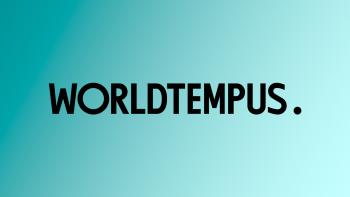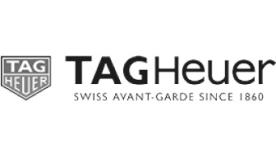


2002 edition of the “Grand Prix d'Horlogerie de Genève“.

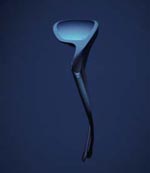
We make timeless watches in a sphere beyond fashions.' Stéphane Linder, marketing manager of TAG Heuer, supervises the creative process for some of TAG Heuer models: from design to the conception of new horological functions.
Why is TAG Heuer a design-oriented brand and how can it justify such a claim?
'TAG Heuer represents the perfect blend of functional design and style', states Stéphane Linder. 'We have what is known as a 'holistic' approach, inherent to brands with timeless, enduring designs such as Louis Vuitton and Mercedes.'
'TAG Heuer is not a fashion brand. A fashion brand takes a creative attitude that is closer to styling as such and to an ephemeral approach to fashion, than to design in the strict sense of the term', explains Stéphane Linder.
What is genuine design, meaning the 'holistic' design implemented by TAG Heuer?
As Stéphane Linder explains, 'it is a functional approach to an object involving a creative process and giving the consumer genuine added value in respect to the actual use of this object'. For TAG Heuer, this definition has become a watchword that is present in all its communication tools, with the signature: 'Technology determines function and function creates design.'
This implies, whether for the 'Monza' chronograph from the 1930s with the timeless design of its cushion-shaped case, or the 'Kirium F1' with its double time display mode, a concern for performance, ergonomics and comfort that has always governed the design of the watch and its bracelet, with functional shapes giving rise to pure, essential lines.
It is not for nothing that the 'F1 Micrograph' was awarded the Design Prize in the 2002 edition of the 'Grand Prix d'Horlogerie de Genève', in recognition of the futuristic design of its rectangular case housing the revolutionary functions of the world's first wrist-worn timekeeping instrument. A perfect example of how function inspires design, since the rectangular case was chosen for a very simple reason: it is the most logical and efficient in terms of optimizing space for a liquid crystal display of digital data.
AN EXTREMELY SPECIFIC SET OF SPECIFICATIONS

Whether for 'Professionals Sports Watches', the 'Classics' or the 'Feminine Series', the three major TAG Heuer lines, the criteria are identical. TAG Heuer therefore imposes them both on designers and at each stage in product development.
And he knows what he is talking about. A graduate in microtechnical engineering from the Federal School of Technology in Lausanne, he worked for many years as a specialist in technology transfers with Africa and the Middle East, delivering turnkey factories. From 1993 onwards, he set up 3D development technologies and then entirely integrated systems at TAG Heuer. However, this ultra-technical expertise has never stopped him taking an interest in design.
'We work only with external designers, since I believe that such visionaries quickly fade if they are designing exclusively for one brand. Nonetheless, we never buy the sketches they might spontaneously put forward. Instead, we give them a very specific set of specifications they can use as a basis from which to let their imagination run free.
This principle allows us to work with the best: Englishman Ross Lovegrove who is our Chief Design Officer, or Swiss designers Hysek, Schöpfer, Ventrella, Scarinzi, Nicolas Barthe. The sketches are then submitted to our technicians and watchmakers in order to put them into practice and to create the first prototypes.'
Stéphane Linder was also behind the design of the Sport Vision eyewear launched by TAG Heuer in 2002. 'We are a watch brand with connotations of sport, performance and prestige, rather than a 'Manufacture' in the strict sense of the term. Our reputation and our know-how are recognized in most countries. We therefore wished to transfer them to another non-watch product. We are pleased to note that Sport Vision eyewear is entirely in tune with the brand and its high-tech values.'
Up-market, functional and revolutionary thanks to a patented invisible hinge system, the Physics line by TAG Heuer caught the attention of professionals right from the outset, since it earned the Silmo d'Or at the International Eyewear Show in Paris in 2001. This success was confirmed in 2002 with the launch of the second line of Sport Vision eyewear, Reflex, which also carried off the “SILMO Prix de la presse”.
INTERVIEW DE ROSS LOVEGROVE
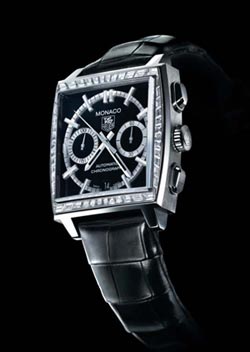 TAG Heuer Chief Design Officer
TAG Heuer Chief Design Officer
DESIGN CONVERGENCE
My very first encounter with TAG Heuer was at The Serpentine Gallery here in London, at an exhibition organized by the brand, where I was asked to make a speech on the future, articulating my belief that the convergence between design and high technology will lead us to new horizons that will thrill us with invention and creative purpose.
Many people see TAG Heuer as a modern brand with a contemporary heritage but I often remind people that it is 143 years old, older in fact than many brands who try to market their heritage on the watch market.
The clear difference for me is that TAG Heuer is a brand that has been innovative since day one, creating without question some of the most significant breakthroughs in the history of the industry.
The various TAG Heuer teams are keenly aware of this and do not rely on these existing achievements, since they consider the future as a source of evolution and inspiration for the brand.
My role within TAG Heuer is to successfully preserve the TAG Heuer heritage and roots while integrating them within current and forthcoming models on the cutting edge of the avant-garde.
The final goal is to create harmony between the technologies and aesthetics of the 'past/present' and what we aim to create in the future.
The success of Sport Vision eyewear collection has proved that the brand is well positioned to diversify into clearly related watchmaking fields as long as what you say to the consumer, is what the customer gets.
This eyewear proved that, by identifying unquestionable attributes of material, form and function and blending them into products which redefine the brand's own exacting standards, a new level of cultural and commercially success can be obtained, stimulating the advanced market with what I term EVO TECH LUX. That implies luxury products which evolve through intellectual investment and state of the art technologies and that are almost impossible to plagiarize, thus protecting not only the brand itself but also the consumer's valued investment.
The work I am involved in at present articulates two conditions, primarily, that of expressing a fluency in design but also a proficiency in the medium of watchmaking technology from the traditional to the visionary.
The challenge facing us right now is to invigorate the team, aligning the brand across the nuances of global markets, and then converge culture and commerce at a level that sees the brand as the sole arbiter of aesthetism and technology at a highly tuned super sophisticated level never quite seen before.
DISCOVER THE TAG HEUER EXPERIENCE!

In 1995, TAG Heuer undertook an own-name point-of-sale development strategy by opening TAG Heuer boutiques in the world's major cities (Tokyo, Beijing, London, New York, Sydney, Singapore, Kuala Kumpur, Dubai, New Delhi, Bangkok). Located in trend-setting parts of town such as Omotesando in Tokyo and Soho in New York, TAG Heuer boutiques are a perfect illustration of the brand's determination to present its entire range of collections in an appropriately contemporary setting and to convey its values and its lifestyle through a dedicated interior design.
Conceived by French architect, Gwenael Nicholas, originally from Brittany but who has been living in Japan for more than ten years, TAG Heuer boutiques provide an opportunity to truly immerse oneself in the 'TAG Heuer experience'.
AN INTERVIEW WITH GWENAEL NICHOLAS

The concept of the new TAG Heuer boutiques is to create a space that expresses modernity, luxury and technology. The complexity and sophistication of the shop features associate warm materials and others that are more modern and pared-down, soft volumes and original display systems. The space is designed globally, the displays are integrated into the architecture itself, creating a sense of harmony.
The design emphasizes the dichotomy of the two worlds of TAG Heuer; avant-garde and watchmaking. It creates the strength and originality of this concept. Each side of the shop conveys a unique atmosphere. The new TAG Heuer identity translates not only the imagery of sport and performance, but also a more abstract and subtle language.
Tension, strength, speed, performance, authenticity, etc., are translated into architectural elements, colors and materials. The customers will feel the power, energy and precision of TAG Heuer through a cognitive perception.
The integrity of the shop identity lies in subtle contrasts between tradition (wood) and avant-garde (visual wall), femininity (curved wall) and sharpness (glass monolith), luxury (silence) and performance (tension). The customer constantly moves through sequences on a path of discovery.
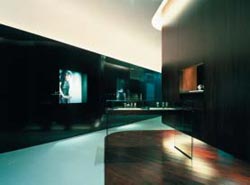
TAG Heuer boutique in Japan. Tribune des Arts - Numéro spécial TAG Heuer - avril 2003
